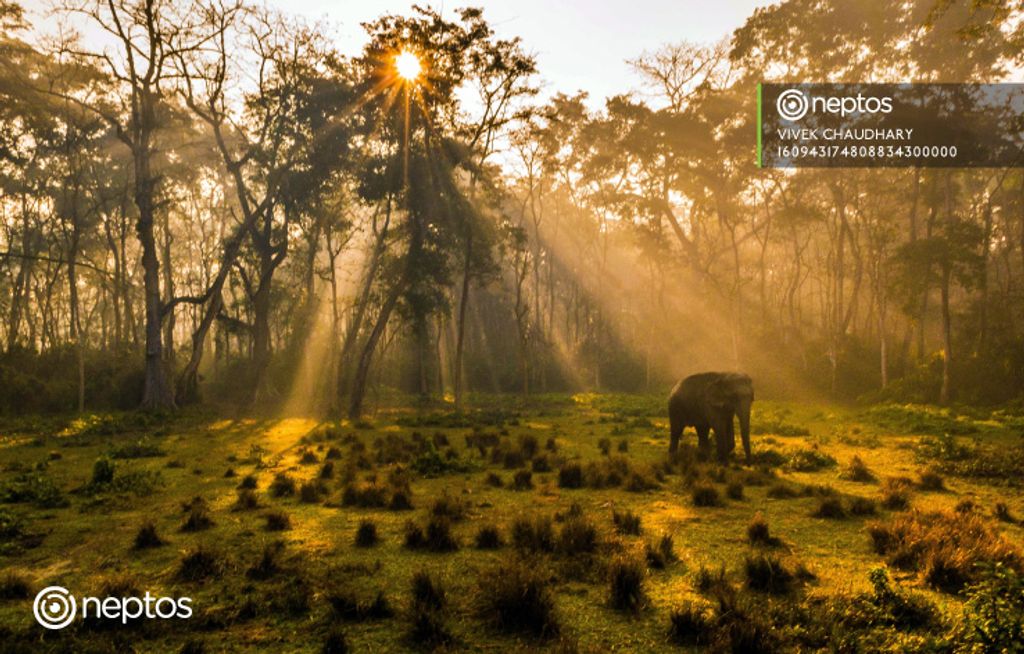Understand the Composition in Photography

If you love pictures, then you must have come across many photos that are brilliantly overwhelming. You may have wonder how to take such photos. Well, it's obvious to wonder and these shots are wonderful because it has great composition.
Yes, the beauty of the images is not only about the subject in photography but it is also about its composition, the structure and the arrangement of other elements in the photo. It's hard to get the perfect shot until you know about composition.
So, what is a composition in photography?
The composition is generally the placement or arrangement of visual elements also known as "ingredients" in any work of art. It is important elements that keep the art distinct from the subject. In general words, it is the structure of the photograph. It’s the process of arranging all the elements of the photograph and presenting them in an appealing manner.
There are various ways to compose or change the composition of the photographs. It might be the simple forward & backward, or left & right movement of elements. Change your lens direction, zoom in or zoom out, it will give you different composition. It takes a lot of time to master in composition, but once you know the principles of composition, you can make things better.
Basically, to understand what is a composition in photography? You need to understand its elements.
Among many elements, you need to take care of three elements i.e. Points, Lines, and Shapes.

If you analyze the photographs, your subject, the background and other tiny matters that hardly exist in the photographs are all made of points, lines, and shapes. Some of the images have a complex structure, for example, images with trees or images that consist of lots of shapes and patterns. It's hard to get an insight of such images, but they still have a shape, points, and lines. They all form together and helps to form dynamic and amazing pictures.
Besides, they are interconnected with one another. The proper arrangement of such elements is the core of composition.
To be more precise about the above statement, take a look at the following image and their points, lines, and shapes.

The above image is a photo from Yosemite, it's a popular destination for the photo enthusiast. Now, look at the same photo with lines, points, and shapes.
Let's look at this image from the famous Death Valley. This photo is made up of two lines. Lines are important as it draws the attention of viewers, while the subject of the photographs capture the eyes and made you stick for a while.

This is the same above picture, just made it with lines and points. The image is well composed as the photographer has used the rules of thirds and has placed the main subject of the photographs in the center. Whereas, the lines, points and the color of the picture create a sense of depth in the picture.

Well, those were lines and points, but what about the shapes? Lines do form its own shapes but there are other photo categories where the main subject is the shapes.
The image looks plain and simple with a block of ice. But if you have to analyze the image in terms of points, lines and shapes then it is one of the perfectly composed and balanced image.

The block of ice almost forms the shape of a triangle while the straight line is the wave of the ocean that somehow forms the straight line all along the image.

Points, Lines, and Shapes tends to make the photos better and more appealing. Just like the color of the images can spark different feelings and emotions, these points, lines, and shapes also help to create different feelings among the viewers.
You need to understand how all these elements can contribute to the photograph's mood while the sum of all these elements helps to adjust the composition, exposure, and other elements to enhance the picture's emotions.
Lines plays a great role in the emotions in photographs. The diagonals lines create a sense of moving within the frame and leads the eyes towards the ending point. Whereas, the vertical lines give a sense of stability and is generally associated with a calm or peaceful image. On the other hand, curved lines along with circles and ovals give a sense of motion.
Likewise, points help to create sharpness and also forms a shape in the image. Points generally help to connect each element of the pictures and give pleasing sense to viewers.
Lastly, shapes like circles and ovals create a sense of movement in the photographs as it lacks the corners and edges. Likewise, squares and rectangles give a feeling of stability. While the triangle shapes can direct the eye to the points of the triangle. Whereas, the shapes which don’t sit on a proper base creates the off-balance feel in the photographs.
Well, those were some of the important elements of composition. Besides, these elements, there are other many factors that help to compose the photographs. Some of them are discussed below.
Intention
Yes, the intention is very important when it comes to proper composition. Nothing in the field of photography happens by accident. Everything that exists in the photographs is the result of desired intentions. It takes a lot of time to composed intentional photos. Some great photographers and photographs have been captured taking even hundreds of days and thousands of reshooting.
The intentional shot might take time but at the end, you know what you are clicking and what would be its outcome. Such intentional photos have a purpose and have a high depth of sense.
For instance: The lightning shot. Can you imagine the possibility of getting lightning near the ocean and capturing the lightning perfectly? It takes a lot of time and practice, whereas you need to think about how you are going to present the lightning shot into your camera frame.

Simplicity
We all know simplicity is the key. On the other hand, simplicity is quite hard to get. Before you go for simplicity, first you need to understand the concept of simplicity in photography.
If you have read all the things from top to here, you know now that photographs carry emotional messages. Some photos can give aggressive emotions, while some give calm and pleasing emotions. The process of giving emotion is all about the intention of the shot.
So, when it comes to simplicity, it means nothing from the photos can take away that emotional message that you are trying to convey through your photo. If you trying to give calm feeling through landscape shot, try to eliminate other hindering things that take away the beauty of that landscape.
Likewise, simplicity is to give precise information to the users and trying to tell the story through your shots. If you can portraying some story without any distraction, then that's a simple but powerful shot.

Look at the above shot, the elements of the photograph are nicely arranged and there's hardly any elements that hinder the beauty of this shot. Every element in these photographs exists for a reason.
Balance
Just like we need balance in life, your photography skills need proper balance and that is one of the important parts of the composition.
Creating balance in your photography is pretty easy and simple. You need to figure out yourself how much each of your elements needs attention in the image. The balance in the photograph is also known as "visual weight". Any objects or elements that has a high level of visual weight is considered as visual weight. It could be anything including bright objects, saturated colors, people, animals, structures and other elements.
To create the balance, you need to figure out that the visual weight has been distributed all over the frame or not. The concept of balance in photography can be taken as the seesaw or simply a fulcrum. Moreover, it's also the placement of objects in the photographs.

The above image has the butterfly lingering in the branch of plants, while another branch of the plants appears blurred on the background. The heavy object is placed nicely while the unwanted or lighter object has been placed behind.
Photography is not about balance shot, but it also about the imbalanced shots which creates a dramatic, tense and dynamic sense in the photographs.

Look at the above image, it's quite imbalanced and is heavy on the right side. But if you apply the rule of thirds, the elements is exactly where it is supposed to be. Though this picture might not give a dramatic sense, but it definitely gives the sense of loneliness.
Breathing Space
If your picture contains more than two important elements or points of interest, then you may want to give them the "breathing space". The concept of breathing space is pretty simple, it is the space to separate one element from another.

Well, the birds look nice. Look at its composition and breathing space. The photographers have nicely separated one point of interest with another giving enough space at the center.
Positive and Negative Space
When it comes to photography, space matters and you can segregate spaces into positive and negative space. Both types of spaces are important and both spaces can convey different emotions.
If you have to describe the positive space, then it’s the space in the photographs that stands out and grabs the attention of the users. On the other hand, Negative space is simply the opposite. It is the areas of an image that fades into the background and almost don't draw the attention of the viewers.

Did you notice the negative space that surrounds the sailing boat? It's there but it's generally out of view, while the points of interest are the sailing boat at the center.
Photographs with negative space give the emotions of emptiness, loneliness, calmness, peacefulness and moreover isolated. They are moreover like minimalist images that are there and gives the above emotions.
Whereas, photos with positive space is more intense, busy and active. There's a lot of details in the photographs, while they can appear to be more crowded.

The above images portrait nothing but the buildings. But if you see it nicely, then there are so many details to acknowledge.
You have to be very careful while taking positive spaces shot, otherwise it will harm the simplicity and clarity of the images.
Well, that's it we have almost come to an end of "understanding the composition in photography". Remember that, it's not the thing that you can master it. It's the learning process that can take enough times or even a lifetime.
This is something you need to keep clicking again and again. Analyze the things, make improvements and again start clicking. This is the only way you can come nearer to the perfect composition.
Subscribe to Our Blog
Stay up to date with the latest marketing, sales, and service tips and news.



Comments(0)